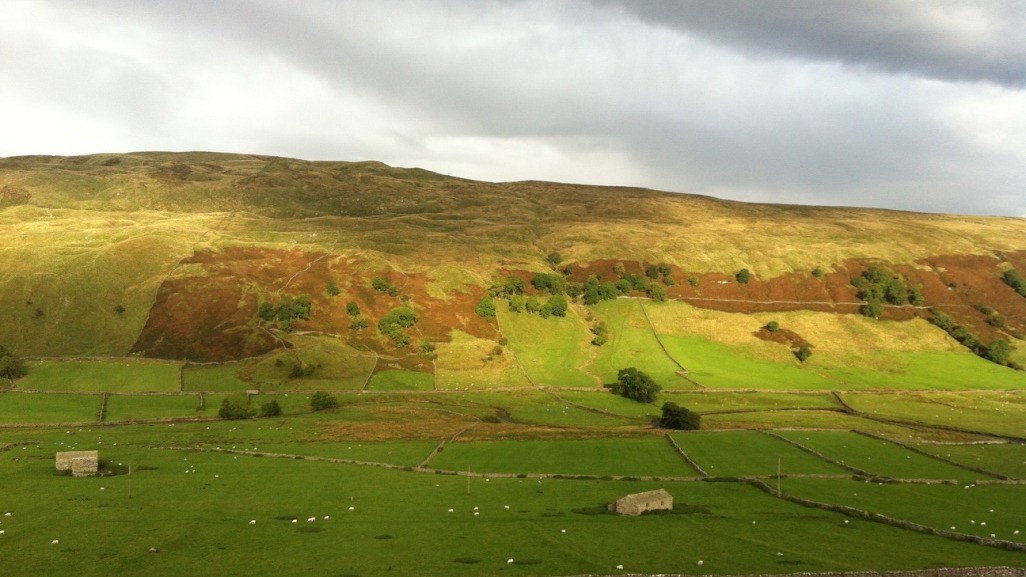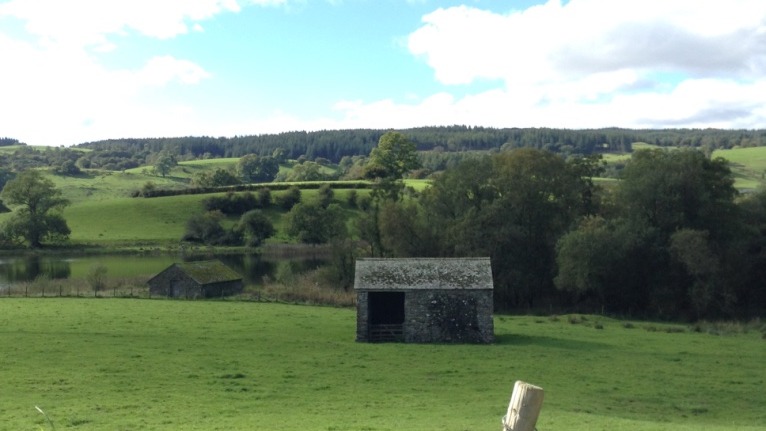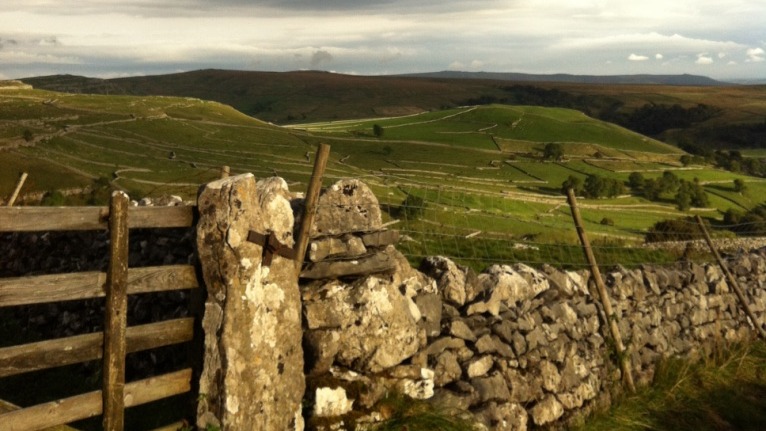Kura Rutherford ruminates on how powerfully children’s books can evoke geographies both unknown and familiar, from Beatrix Potter’s Lake District to the isolation of Mangere Island. Sometimes a walk around a lake means walking into a book.

When my family and I visited the Lake District we were in a hurry. We didn’t think we had time to visit Beatrix Potter’s Hill Top Farm, but on a whim we decided to pop in. When we got there though, we panicked at the sight of a carpark overflowing with tour buses. So, instead we parked in a damp roadside stop by the lake, put on our raincoats, and went for a walk.
The sky was grey, the lake flat, and three wooden boats rested on their moorings. The oak trees around the lake were beginning to turn with the first cold snap of autumn, and up behind them the white cottages sat snug in the pockets of the hills.
In her watercolour illustrations Potter had described her surroundings so faithfully that I felt that uncanny sense of walking straight into a book …
Walking down the tight lane away from the crowds I understood why people make these kinds of pilgrimages. In her watercolour illustrations Potter had described her surroundings so faithfully that I felt that uncanny sense of walking straight into a book; from the squirrels bustling to collect acorns along the path, the diamonds of light shining through the tree canopy, the orange bracken on the hilltops behind the cottages. The landscape was exactly as Potter had drawn it.

By closely observing the natural world, it was as if she had placed a magnifying glass up against her small pocket of England, and with fine brush strokes had allowed us to slip from our tight grip on ‘what is real,’ to see the natural world with a new appreciation – to see it’s magic.
As I walked around the lake, I was especially thankful to those writers and illustrators like Potter who tramped the hills as the seasons changed, watched the ice crack on the lake in late winter, and stood in the field when the first daffodils opened. The artists and writers who allowed me to fall for the Lake District twice over, first through them, and then once again in real life.

That walk around the lake in Cumbria brought me face to face with the realisation of the importance of landscape in children’s books.
Part of the magic of books is that sometimes we come to love a landscape without ever physically setting foot in it.
Part of the magic of books is that sometimes we come to love a landscape without ever physically setting foot in it. Like most readers my age, with school library shelves stacked full of British classics, when I was a child I developed a keen appreciation for the geography of England: the rocky cliffs that the Famous Five trekked; the lake where Swallow and Amazon’s Walker children learnt to sail; the hedgerows where Milly Molly Mandy picked blackberries.
To then one day actually set foot in those landscapes is a special kind of strangeness.
*
But when we walk we take ourselves along too, our history, our experiences, and all the books we have read. Coming from Aotearoa, New Zealand, it is impossible not to think about what it meant to have read so much British literature as a child, and to consider why I felt such an affinity with a part of England that I had no personal connection to beyond books.
Potter gave us a glimpse of a cosy pastoral scene that, even with small animals in the lead roles, helped us construct some of England’s ‘national identity’, its traditions, dialects and cuisine. But she portrayed a virtually untouched landscape. Because the Lake District is a national park, the environment is now fairly unchanged and overflows with ‘for fun’ activities like walking and sailing.
When you shift the gaze from that scene to New Zealand children’s literature, the landscape holds a different significance, and the relationship between humans and their environment is inevitably more complex – touching on and colliding with our colonial history, and the marks it has left.
…the [NZ] landscape holds a different significance, and the relationship between humans and their environment is inevitably more complex – touching on and colliding with our colonial history, and the marks it has left.
An example of this is To the Harbour by Stanley Palmer, published in 2007. To the Harbour takes us straight back to the Manukau Harbour in the 1940s, both in its illustrations (Palmer’s monoprints) and the language. It is a nostalgic story rooted in a deep sense of place, telling about Palmer’s family catching a boat to a small island to spend their summer days fishing and swimming. In the illustrations, we see cabbage trees and flax bending in the wind, godwits flying high above the harbour entrance. But also in every print we see the creep of settler activity into the wilderness – red corrugated iron roofs, a phone box, a Friesian cow.
The New Zealand classic Old Blue by Mary Taylor evokes a strong feeling of the landscape on the East Coast of the South Island, and also tells some of our history. This true story is set in an isolated island off the coast of the South Island that was devastated by the arrival of settlers and the animals they introduced, all of which nearly decimated the Black Robin population. The redemption in the story is that the last Black Robins, the Grey Warblers, and a dedicated conservation officer Don Merton work together to bring the Black Robin population back from extinction.
Maraea and the Albatrosses, by Patricia Grace and illustrated by Brian Gunson, tells the poignant story of an elderly kuia who is deeply connected to her environment and its seasonal rhythms. Maraea grew up in a small settlement on a rugged coastline, where each year she waited with her community for the return of the nesting albatrosses. The yearly passage of the albatrosses becomes a metaphor for both Maraea’s own life cycle, and the gradual loss of her community to urban migration. Eventually Maraea becomes the lone figure on the clifftop waiting for the albatrosses to come home, and the dwellings and gardens give way to the wild elements. Finally she too gives in to the loneliness, and lets her aged body sink into the clifftop, taking the form of a rock and then an albatross, when she takes flight.
…the landscape is pivotal to the storytelling – both in its physical presence and as metaphor for our country’s history …
In all of these books, the landscape is pivotal to the storytelling – both in its physical presence and as metaphor for our country’s history, all tangled together with our sense of nationhood, our ability to influence the environment in both positive and negative ways, and the effect of the past on our present.
Sometimes a walk around a lake is more than just a walk. I was reminded of how much we need writers like Potter who fuel a child’s love of the natural world, who show us butterflies in flight and a sky full of stars, and help us look at nature with fresh wonder. But also how much we need writers who in looking closely at the landscape help illuminate the ways we have gone wrong and what we can do better. Books, landscape, and humans inextricably linked together.

Kura Rutherford
Kura Rutherford (Te Rārawa, Ngāpuhi) is a school librarian, writer and editor, who lives in Tāmaki Makaurau. She grew up in Hokianga and Grey Lynn, before moving to Hawke’s Bay for 20 years with her husband, Dominic, to bring up their three daughters. She worked for 10 years in public libraries in customer service and community roles before becoming the sole charge school librarian at Taikura Rudolf Steiner School in Hastings. Now having returned to Tāmaki with her family, she works in the same role at Michael Park School in Ellerslie. She has been connected to Steiner education since she was 23 when she and her husband worked for a year at Hōhepa Farm in Hawke’s Bay, and all three daughters have attended Steiner schools. Kura’s writing focus is on health, education and literature, and she has written for The Sapling, Good magazine, EBSCO databases, Magpies magazine, and craft magazine Extracurricular. She has a special interest in supporting organisations in their te reo Māori strategic planning and development aspirations.



